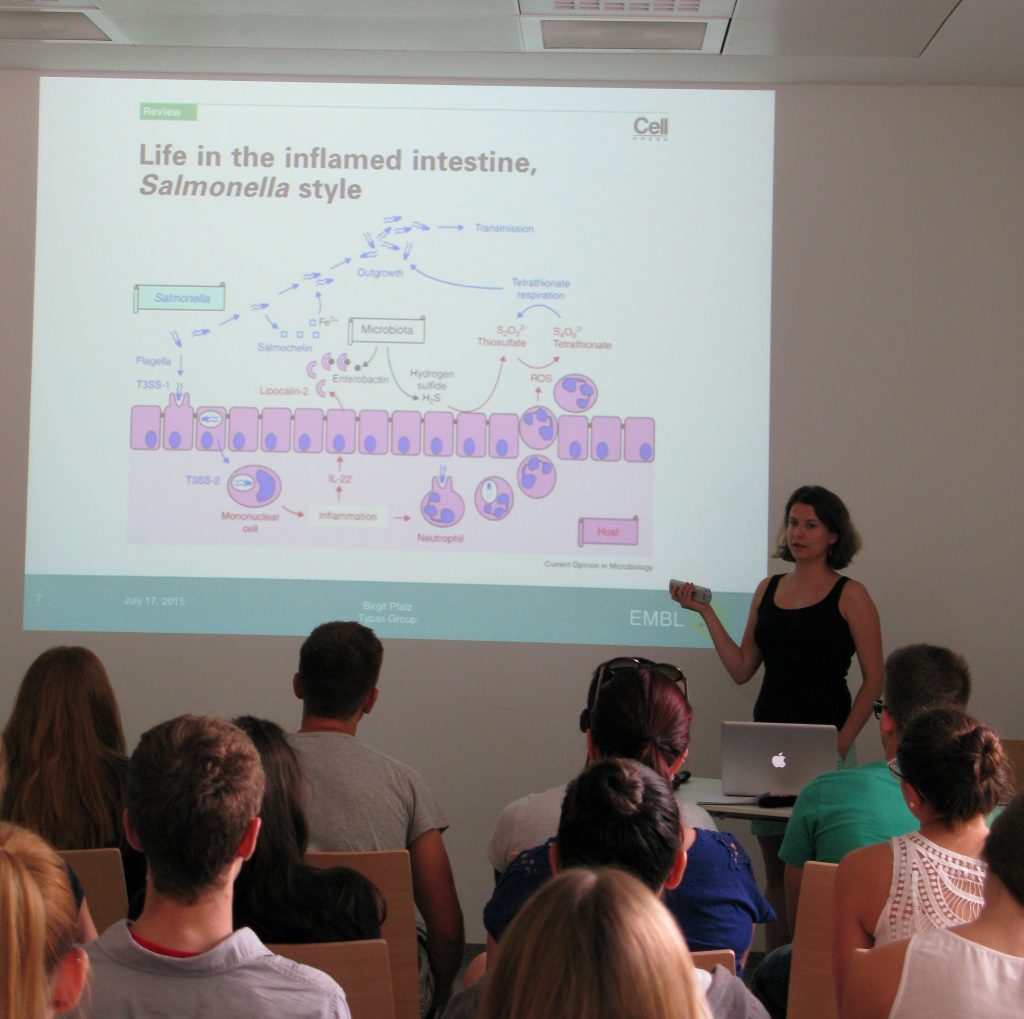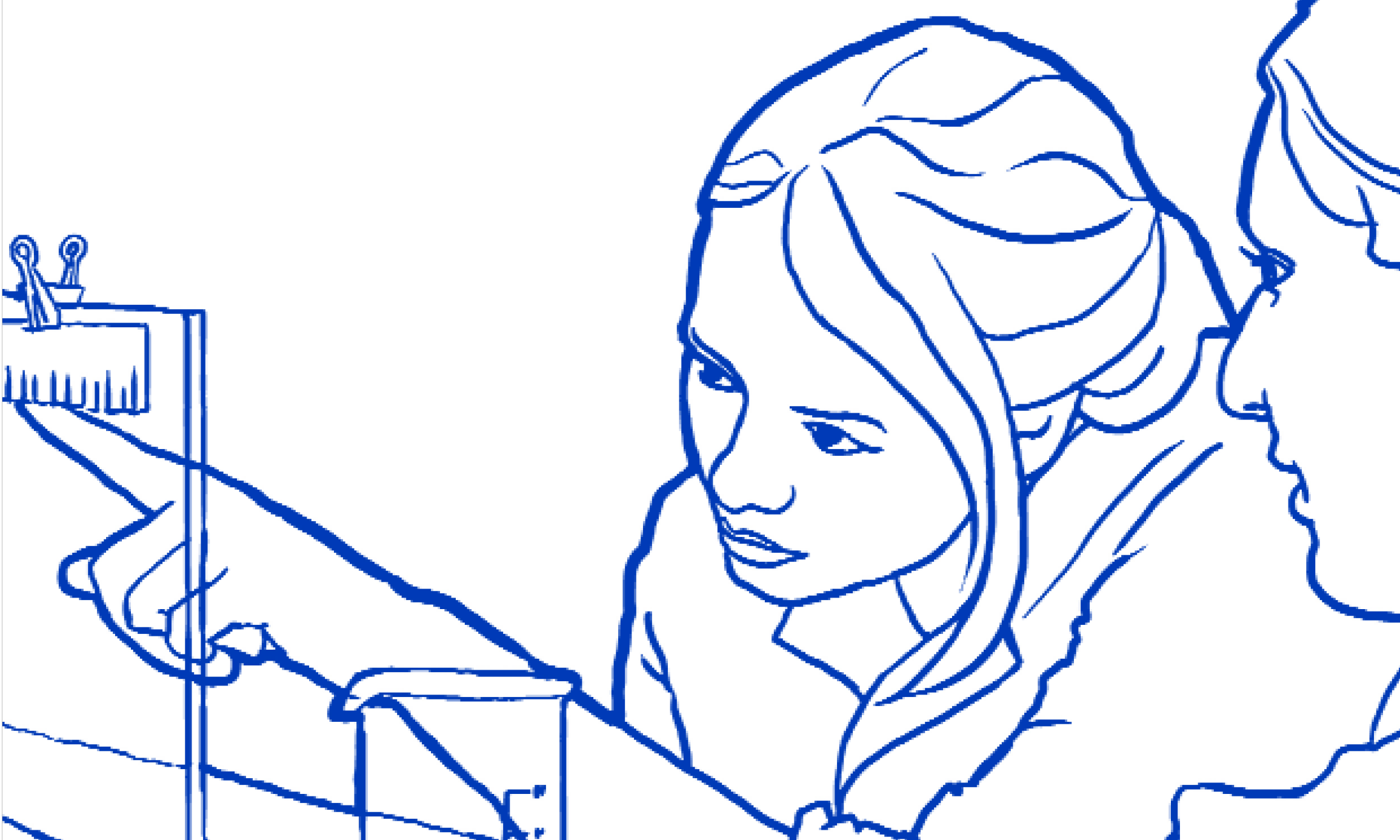EMBL School Ambassador Birgit Pfalz
Country: Germany
Profile
Hi, my name is Birgit and I come from the most eastern town of Germany, a place of many movie scenes – Görlitz.
I recently finished my PhD at EMBL and I’m now a bridging postdoc in Nassos Typas’ lab. In this lab we use robotics to work with thousands of bacterial strains at a time. We investigate the growth of different mutants, their responses to drugs and even their interactions with other organisms.
I was always interested in pathogens and how they cause infectious diseases. While I spent my PhD with the well-known bacterium Salmonella, I worked with different viruses during my diploma work at Stanford. This is also when I learned that one of my favorite molecules, RNA, can be infectious by itself!
I very much enjoy communicating science to all audiences, and especially questions from non-scientific audiences broaden my horizon and help me to examine my work from a different perspective. Therefore, I say share to grow!
Diary
On two days in July 2015 I found myself in front of 30 biology intensive course students from Gymnasium Konz. They had boarded the bus in their hometown at 6 am for a three hours ride to EMBL to learn what it means to do research.
After an introduction to EMBL’s mission, build and research topics and a few more fun facts like the amount of coffee consumed at EMBL’s conferences every year (despite their early rise the students passed this attention test and we all had a good laugh), it was time to go into more detail. The students should get a real life example of a research project and – I guess – also of a real life researcher. So I was very happy I had been invited to present my PhD project: High-throughput chemical genomics in Salmonella. „Excuse me, high-throughput what?!“ – exactly! My goal was for everybody to understand this title by the end of my talk.
So we simply worked our way through the title, starting at the end: Salmonella. I explained how Salmonella infects the human host, how it smartly outcompetes the present gut bacteria and how it uses division of labor to accomplish this task. Salmonellae send one crew off to invade the gut tissue and cause inflammation. As a result the host mobilizes all kinds of antibacterial defenses, effectively harming gut bacteria, whereas Salmonella has developed a set of skills to evade this attack and can thus flourish in the gut lumen.
Next, we learned how we can remove a gene from Salmonella’s chromosome and that we have the DNA sequence for the entire genome available allowing us to construct so called deletion libraries – a collection of many, many mutants, each one missing precisely one gene. Surprisingly to some students a gene deletion often has no visible effect. We found out that certain genes are only required under stressful conditions but not when we grow bacteria under their favorite growth conditions in the lab. Therefore, we could understand how chemical perturbations might tell us more about the conditions in which a gene is needed.
We also drew the conclusion that testing the fitness of many mutants in many conditions (=chemical genomics!) would allow us to compare the mutant’s reaction pattern across conditions. If this is similar the deleted genes are often involved in performing the same task in the cell. Therefore, we would be able to get hints about the function of a gene by investigating to which genes of known function it behaves similar to.
Now there was only one question left: How do I test thousands of mutants in hundreds of conditions in a high-throughput manner? So we spent the remaining time exploring the only reasonable answer to this question: robotics. With videos showing the operation of automated arraying robots and some hands on material of plates and stamping pads we understood how we manage the transition from storing liquid mutant libraries in plates with 96 tiny wells to testing more than 1500 mutants growing as colonies on a solid agar surface containing a chemical stress (imagine jelly, just a little more toxic). So all together this is what we call high-throughput chemical genomics in Salmonella.
After the presentation, the students had many questions starting from “How did you get the idea for this project in the first place?” over “Who pays you?” and “How much do you work?” to “What was your final grade in high school?”. They were curious about my every day schedule, which is something I could connect to a lot. Even when I was already studying biochemistry I sometimes wondered what researchers in the lab really DO all day, so I was quite happy to share my experience and give them some insights.
The most rewarding moment in both presentations was to observe students experiencing the ‘aha’ moment and finding some of them taking ideas a step further, asking “Could you then also do …?” – I dare say there were a number of future researcher minds in this audience.
Overall it was a very fun and rewarding experience, and I would like to thank ELLS for giving me this great opportunity to communicate my research.


